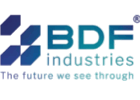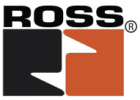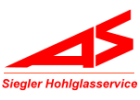The OPC UA Companion Specification 40301 and the associated VDMA standard sheet are expected to be available as a release in October 2021 - after the review and comment phase has been completed.
OPC 40301 describes the interface between a glass processing machine and Manufacturing Execution Systems (MES) or Enterprise Resource Planning (ERP) for data exchange. The goal of OPC 40301 is to ensure compatibility between glass processing machines and higher-level systems from different manufacturers.
This first release candidate for flat glass was submitted to the Mechanical Engineering Standards Committee at DIN (NAM) on March 10, 2021. The use cases show various identification procedures as well as decisive elements of job management. The document will be available on VDMA from April, with publication in DIN-Anzeiger to follow in early May. The public can comment until July 1, 2021.
OPC Foundation members can download the corresponding documents from the website, VDMA members can find the release candidate in the DaTeR database or obtain it from Gesine Bergmann.
What it is about
Processed flat glass is individual. It is rarely processed en masse into similar articles and products. Machines must process information of individual glass elements and map processes of non-digitalized interfaces between operator and machine. There are many transformation processes, and the processing requirements are high.
Over the years, methods for information transport and modeling have been established in the glass industry, which are reflected in the OPC UA model. Example: How is a job defined? Answer: as a specified work order for one or more glass elements. For implementation, the job can reference recipes of work in the respective machines or production lines, by
- grouping work orders in a sequence in a job group, or
- changing the sequence of the jobs and the job groups, and
- assigning a state to each job group and job (see ProductionStateMachine)
1. Identification:
- Machine identification for control
- This includes basic data about the machine such as serial number, manufacturer, production data, etc. Also included is information useful for job planning.
- Query of the machine state
- The machine provides at least the dynamic information specified in the Companion Specification with the Job State Machine and Events
- Request for machine documentation
- The machine provides its own documentation. This documentation is either stored directly on the machine or in an external location. In this case, a URL is specified. If another party, for example a document management system, needs the machine documentation, it can request it from the machine's server via OPC UA.
- Identification of the logged-in users
- It is possible to query a list of currently logged-in users and their properties via the OPC UA server of the machine.
- Identification of the capabilities of a machine
- The controller can query the processing capabilities of the glass processing machine from the OPC UA server.
2. Job
- Order management
- A PPS controller issues a new job to a glass processing machine. It can change or delete these jobs by calling the corresponding methods.
- Query of the current order list
- The controller can query the current job list from the OPC UA server of a glass processing machine. This information can be used to plan further jobs or to optimize the process.
- Current status of a job
- The controller can query the current status of a specific job from the OPC UA server of a glass processing machine.
- Release job
- The controller can give the OPC UA server of a glass processing machine the production release for a specific job. This job can then be started by the operator at the machine or by the machine itself.
- Suspend job
- The controller can suspend the production release for a specific job from the OPC UA server of a glass processing machine.
- Machine or operator triggered event
- The glass processing machine is expected to offer all current errors and warnings via the machine interface.
























